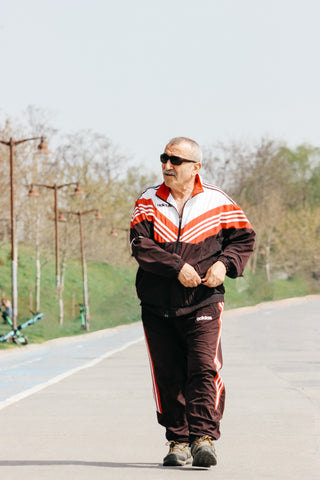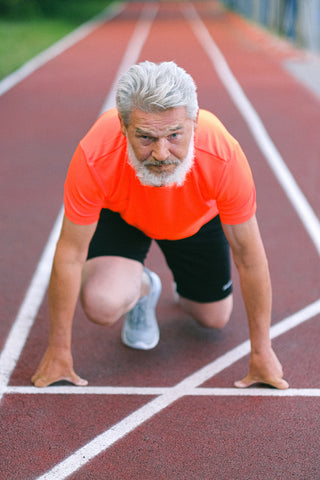Older adults aged 65 years and older are practicing a sedentary lifestyle even though several studies have proven the effectiveness of exercise for better health and aging delay. How could anyone pass up an anti-ageing portion? I think very few people would. Regular physical activity can provide numerous physiological, cognitive, and psychological health benefits. But it does not change the fact that exercising can cause soreness and cramps. It would have been easier if people could just sit on their couch and rub the exercise cream all over their bodies including their heads for better cognitive functioning. According to Smith, K.L. et al, “considerations such as health concerns, lack of knowledge, fear of falling or injury, time constraints, and lack of transportation are generally reported as disincentives to participation by older adults” (1). All these factors are barriers that prevent the increase of physical activity in older adults. However, this is a barrier that can be eliminated if participants decide to prioritize their health. According to Bennett and his colleagues, “the recommended amount of exercise for older adults is the same as the adults aged 18-64 years which is at least 150 min weekly (about 30 min 5 days a week) of moderate-intensity physical activity”(148). 30 minutes per day for 5 days to improve one’s health can be impossible for a perfectionist. Exercise should be fun and less time-consuming.

Motivations to Help Increase Physical Activity in Older Adults
Health and Well-being
The primary motivation for older adults is to maintain good physical and mental health. Gothe and his colleagues did a study to investigate the motivations and barriers to physical activity for older urban African Americans. Participants in the research reported they exercised because they wanted to release stress, feel alert, strengthen bones and muscles, and simply feel better. One participant summarized her motivation as being able to stay by herself, take care of herself, and stay out of the nursing home. Involving friends, family, coworkers, or acquaintances in an exercise program, will help motivate participants. And it will help keep them inspired and accountable to their fitness goals. Older athletes are also able to motivate their friends and family to strive for better health when they witness their level of commitment.

Social Support
Older adults get motivated when they are encouraged by family, friends, and community. In the study, a participant mentioned that “not only does this motivate them to be more active but they enjoy helping others reach their goals as well. One said, “I love seeing the progress of others”. Another stated, “Seeing other’s progress motivates me even more”. One more participant added that “other than family and friends, the encouragement from her doctor, and several participants discussing educational and social programs and community events as a source of information and support motivate them to stay active”. Community plays a vital part in helping to keep older athletes engaged, accountable, informed, and motivated.

Enjoyment
Exercise is fun and older adults enjoy the process and result of exercising. One participant in the study reported, “Well I am motivated because I love what I do”. Another participant added that the “enjoyment also stemmed from the social aspects of exercise and music”. Other participants mentioned enjoyment as a result of being able to actively play and engage with their grandchildren, nieces, and nephews. Not everyone enjoys exercise. A major reason is because they feel forced to perform and many will remain consistent while hating the task. This strategy reduces the psychological and mental effects of exercise on the individual. How about you try to pair exercise with something you love and try experimenting? It might feel uncomfortable at first, but give it time and allow yourself to enjoy the new movement.

Walking
Studies have encouraged walking to be an intervention that is sustainable long-term among sedentary to moderately active older adults.

An Exercise Program
This is an effective strategy that will provide the most results. Bennett and his colleagues found that “longer-term trials and follow-up after trial completion are necessary so that the sustainability of a particular approach can be evaluated… Longer trials are more expensive, difficult to recruit for, and vulnerable to attrition and waning attendance but they reflect the real challenges to face when motivating older adults to be more active”(148). Despite the challenges of enrolling in an exercise program, it is not impossible. Interested participants can hire a budget-friendly and efficient fitness trainer.

Conclusion
Exercise is essential to life and required among the ageing population. It will help prevent a declining health, slow down the aging process, provide better mental health and stronger joints/muscles to prevent falls in older age. There are major barriers facing the increase of physical activity in older adults. This includes health concerns, lack of knowledge, fear of falling, time constraints and lack of transportation. Current studies show that health and well-being, social support, enjoyment, walking, and an exercise program are interventions to provide an increase of physical activity in older adults.
References
Bennett, J. A., & Winters-Stone, K. (2011). Motivating older adults to exercise: what works? Age and Ageing, 40(1), 148-149.
Gothe, N. P. (PhD)., & Kendall, J. (MS). (2016). Barriers, Motivations, and Preferences for Physical Activity Among Female African American Older Adults. Gerontology and Geriatric Medicine, 2(1).
Smith, K. L., Carr, K., Wiseman, A., Calhoun, K., McNevin, N. H., & Weir, P. L. (2012). Barriers Are Not the Limiting Factor to Participation in Physical Activity in Canadian Seniors. Journal of Aging Research, 1(1), 1-9.